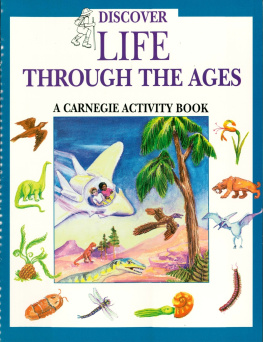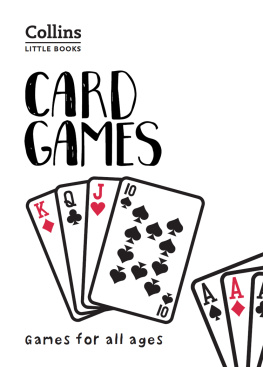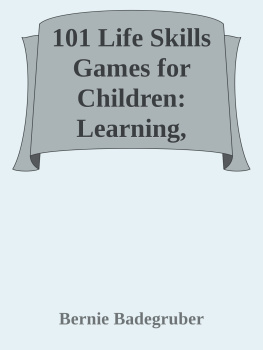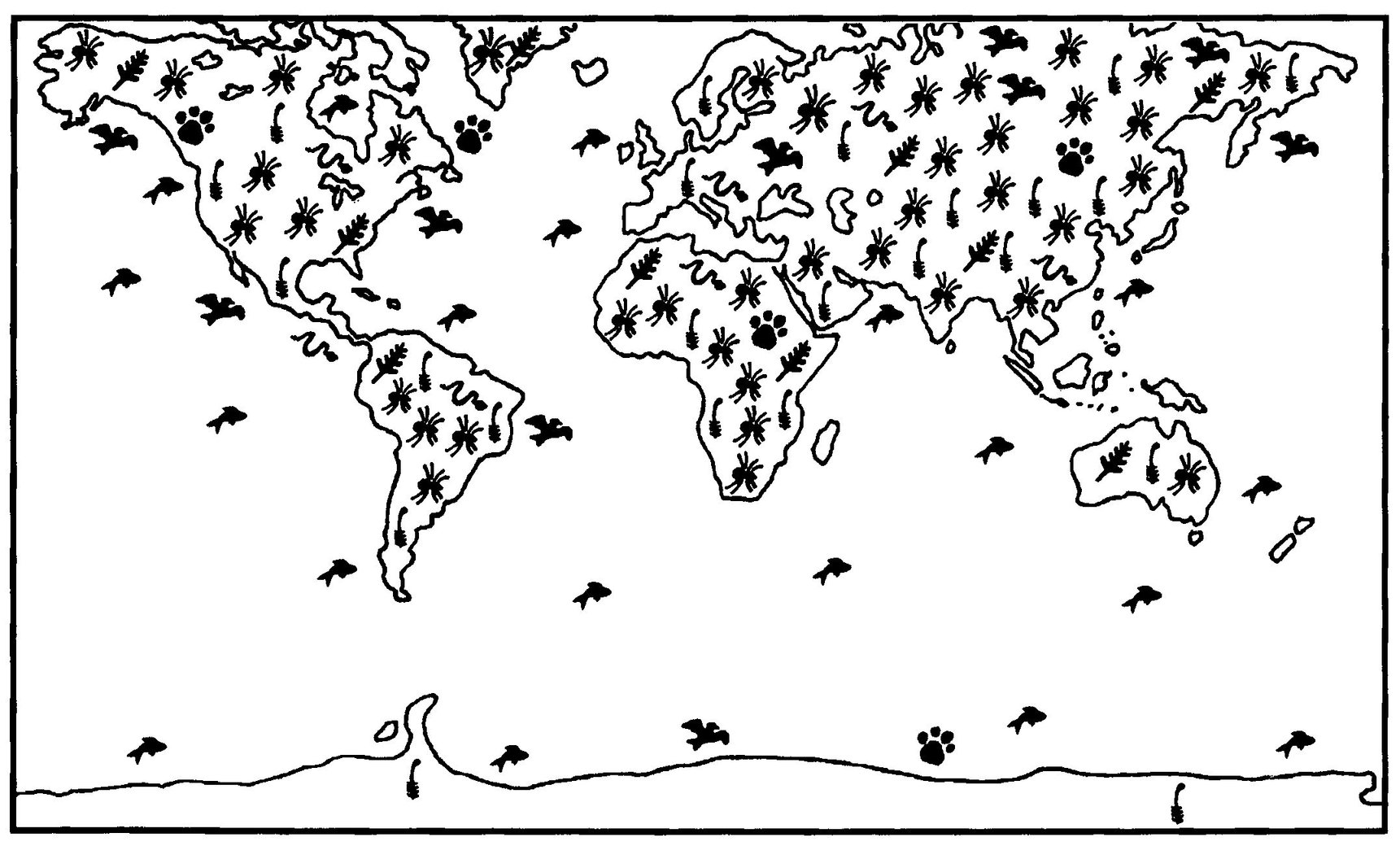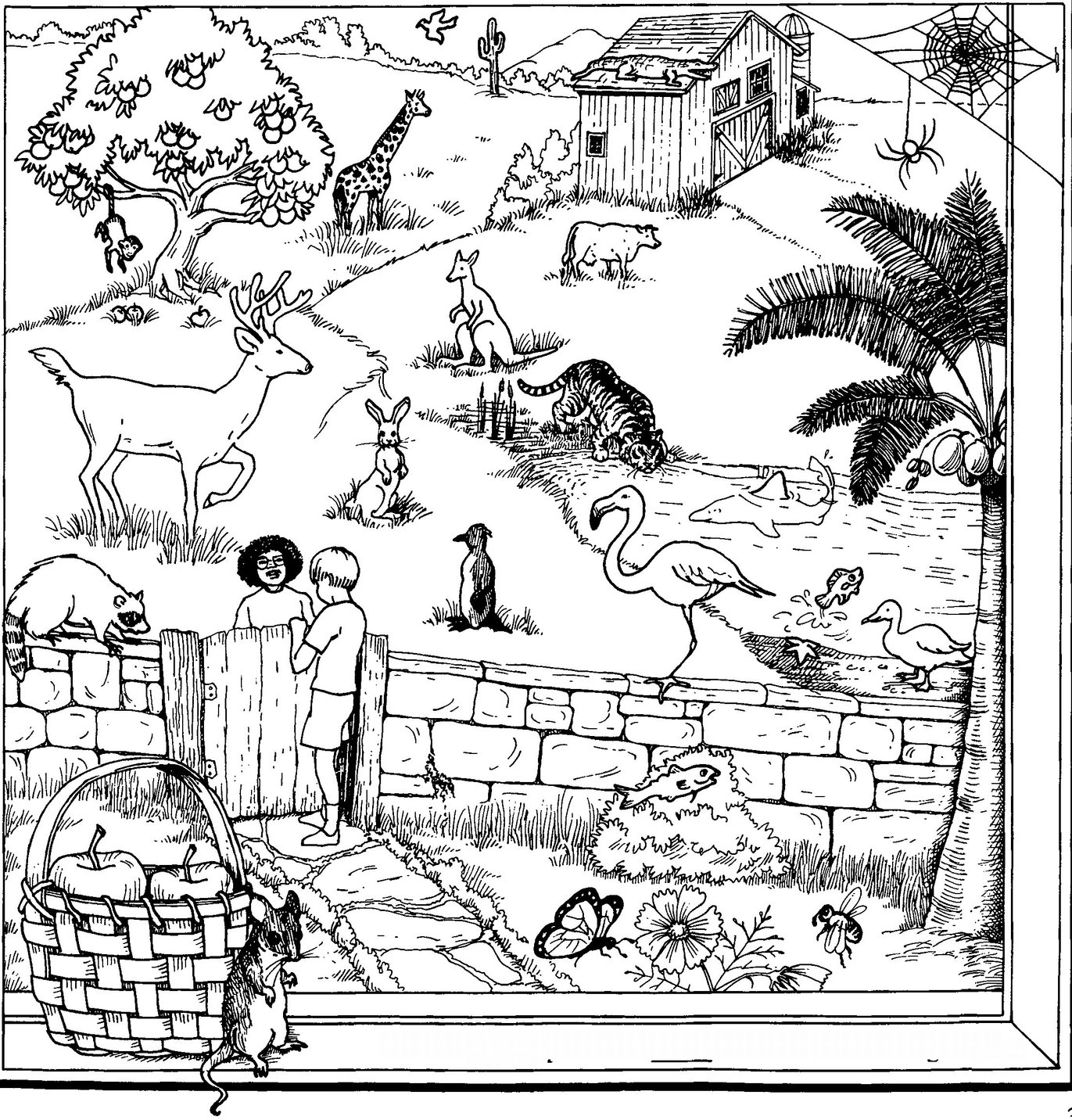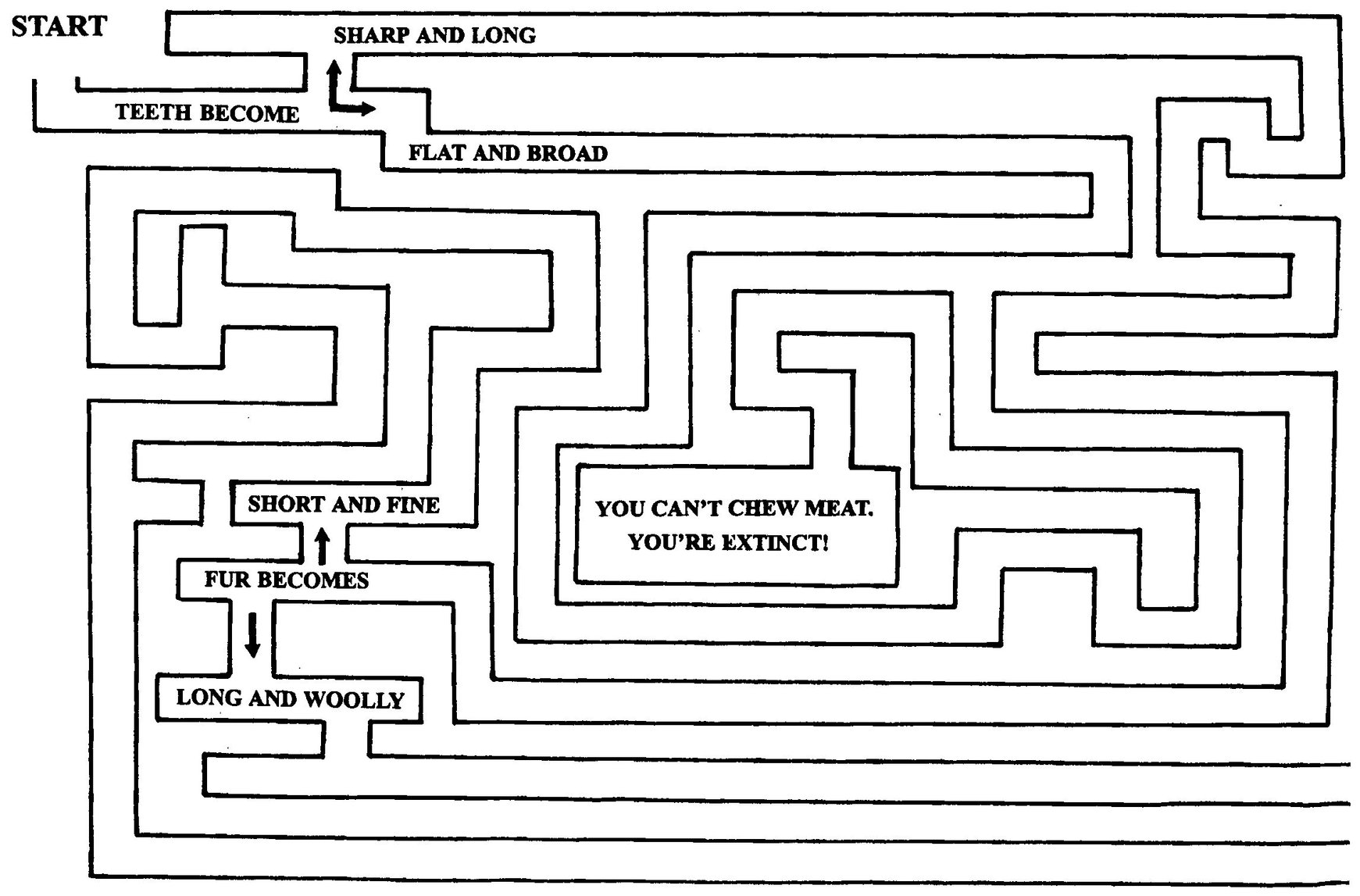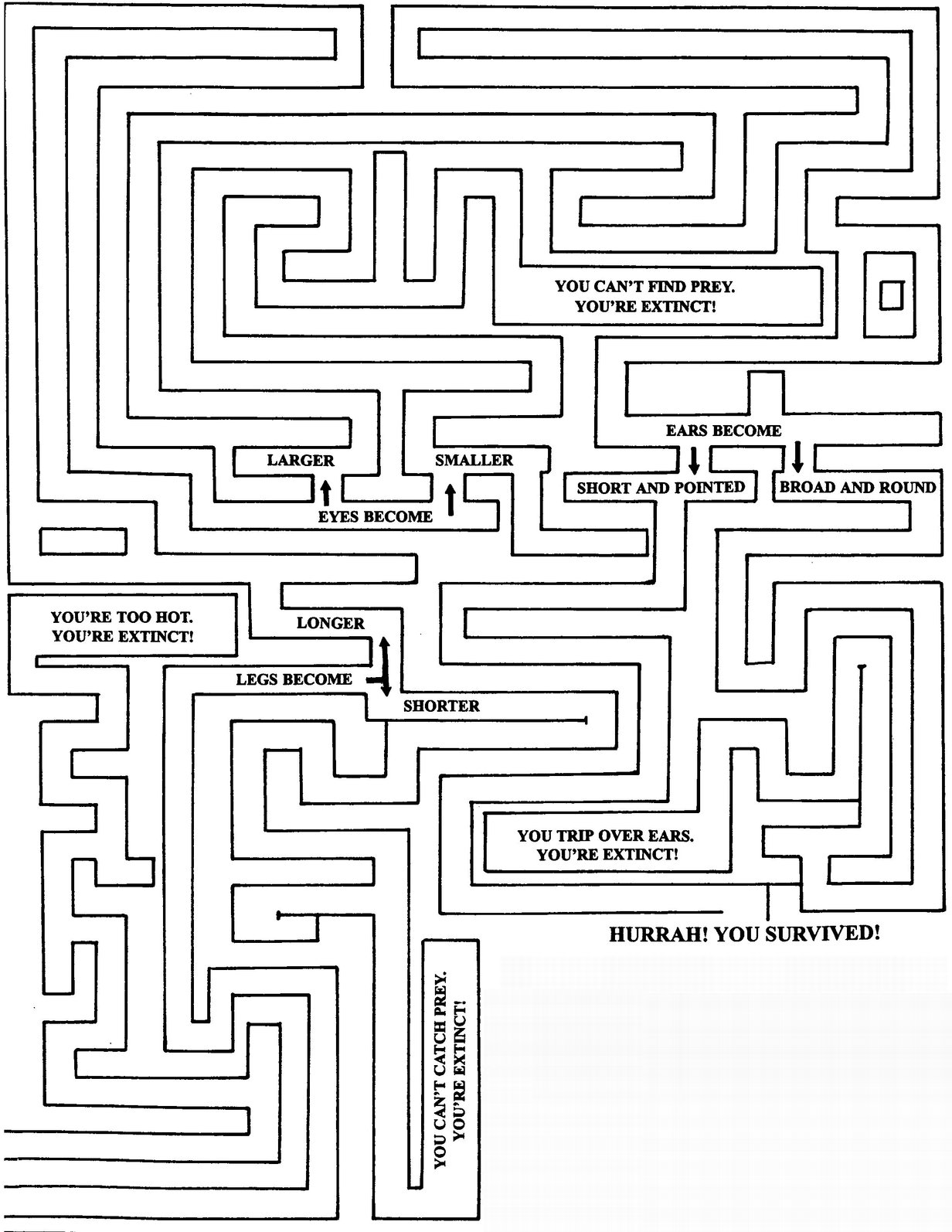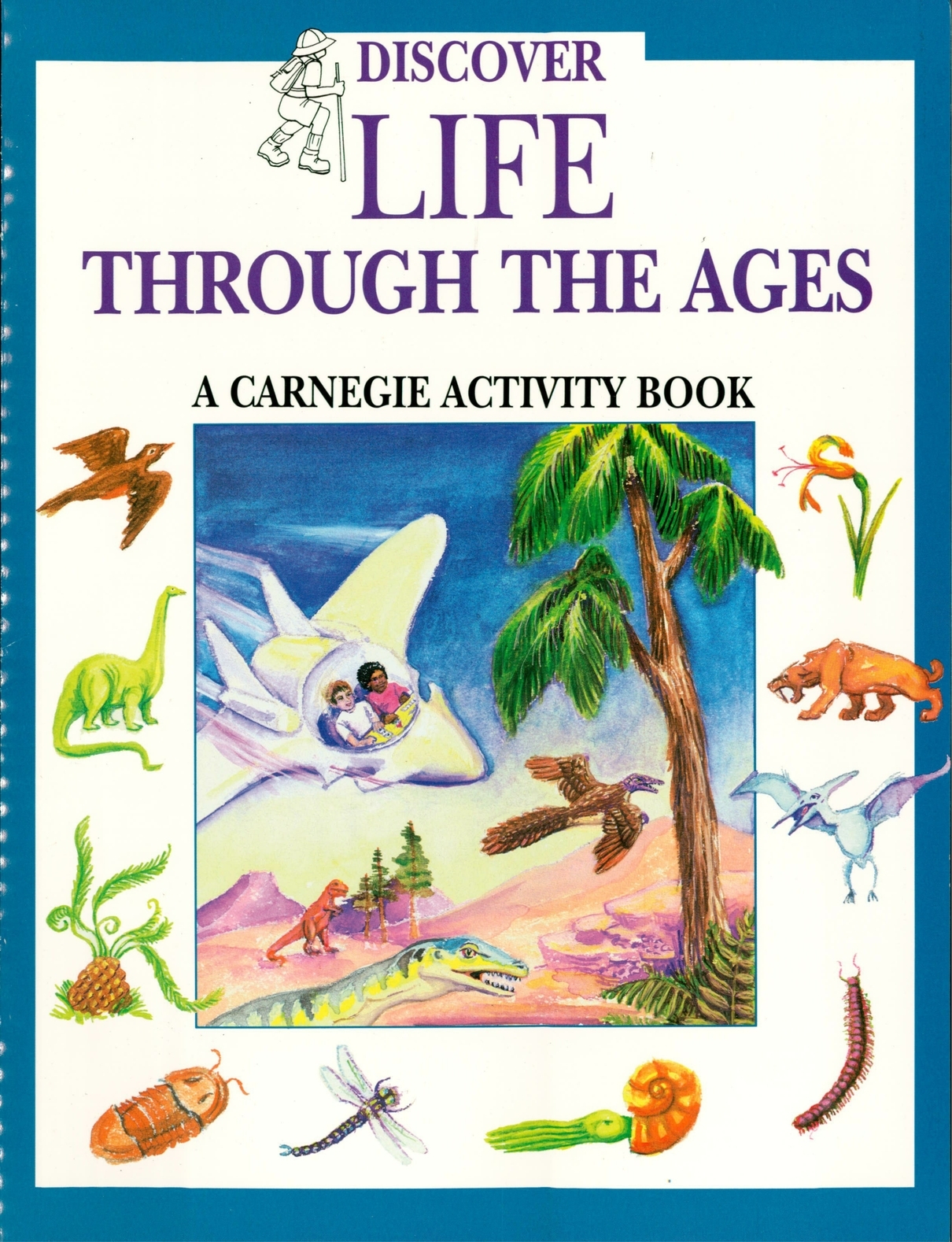
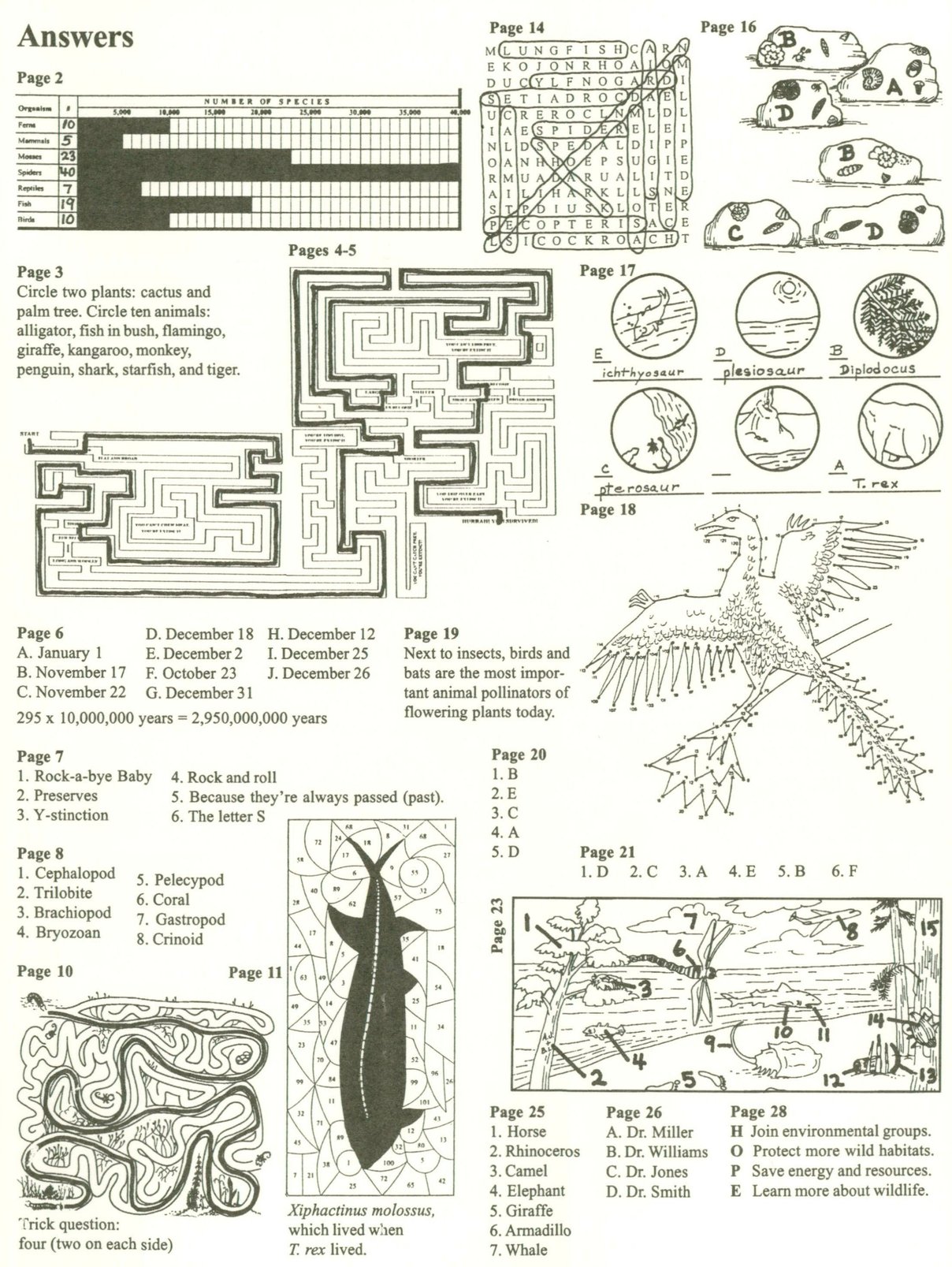
Variety Is the Spice of Life
Have you ever wondered why there are so many kinds of living things on Earth? Why are there more than 7,000 species of reptiles, 8,000 types of grass, and 350,000 different beetles? Scientists have found and named one and a half million species of plants and animals, and think that there are still at least 30 million more waiting to be discovered.
So many species exist today because the Earth has such a large variety of habitats. A habitat is the type of environment in which plants and animals live. If habitats were the same everywhere, fewer kinds of plants and animals would probably exist. Creatures may face ice and snow each day, or sun and sand. Fish swim in fresh or salt water. Plants live in shady, moist valleys or on windy, open clifftops. Each species has special structures or ways of behaving that help it survive. These special features are called adaptations.
Lets chart the diversity of a few categories of life. Count the number of times each symbol appears (cross out the symbols as you count). Write the totals under #. Each symbol represents 1,000 different species. Figure out how many species each type of organism has and color in the correct number of blocks on the graph.
Today there are many different habitats on Earth, but it hasnt always been so. Take, for example, the time when the first dinosaurs lived (about 225 million years ago). The climate throughout the world was hot and muggy, and the same kinds of plants and animals were found everywhere. Compared with todays species count, there were many, many fewer kinds of plants and animals. Gradually, there were climate and geological changes as well as adaptations in the plants and animals themselves. These changes made it possible for the amazing number of species alive today.
Look carefully through this farmhouse window at the living things in the country scene. Decide which plants and animals are not in their correct habitats and circle them. Then color the picture.
Evolution and Extinction
How do plants and animals adapt to different conditions? Adaptations arise through evolution, a long process of changes in a population of a specific plant or animal. An individual from that population may be born with a difference in some characteristic because of a new combination of traits passed on from its parents. Or it may have a new trait altogether that comes from a change, or mutation, in its genes, the basic chemical pattern of life. Occasionally the new behavior or body part helps the individual survive better than the other members of its species. If this individual passes the new trait on to its offspring, they may survive in greater numbers and pass it on to their offspring, and eventually a new species is formed.
What about the creatures without the new trait? Because they cant compete or survive as well as those with the new trait, they become fewer and fewer in number, and at some point they become extinct. Extinction occurs when an entire species no longer exists.
Extinctions are important in the history of life on Earth. As less successful species die, more room is made for new species to develop. Its hard to believe, but scientists think as many as four billion species may have come and gone during Earths history. That means that 99 percent are extinct! Remember, though, that if none of the plants and animals had become extinct, there would have been no opportunity for the evolution of the many newer forms of life that exist on Earth today.
Trace the path of this imaginary animal from its first appearance through evolutionary changes to the way it looks today. At each branch in the path, choose which model of the animal you think will be most successful. (If you choose a path that leads to extinction, just back up and try again.) See if you can avoid extinction and find evolutionary success!
NOW PUT ON YOUR THINKING CAP
Think about the traits that made this animal successful and answer these questions.
- Was this animal a carnivore (meat eater) or an herbivore (plant eater)? How do you know?
- When would flat, broad teeth be an advantage?
- What kind of climate did this animal live in? How do you know?
- When would long, woolly hair be desirable?
The Record in the Rocks
Life first appeared on Earth about three and a half billion years ago. This date is not from a time machine but from the record in the rocksfrom fossils found in the rocks and from radiometric dating. Radiometric dating tells how old something is by measuring its radioactive decay, but fossils are what we want to look at here. Fossils are the remains or signs of ancient life found preserved in rocks.
Most animals and plants decay and disappear when they die, but sometimes under the right conditions, their bodies are buried and become preserved in sand or mud. Over millions of years, the surrounding material becomes rock, and the plant and animal remains become fossils.
Fossils can be teeth, seeds, bones, or shells. Leaves and feathers may be saved as delicate impressions in the rock. Even footprints and burrows can leave evidence of past life.
Paleontologists (scientists who study fossils) look at rocks and fossils to understand the history of certain plants and animals, and to figure out how the characteristics of land and sea have changed over time. Comparing todays creatures and conditions with those in the fossil record can be very helpful.
The entire time that life has been on Earth can be shown on the imaginary calendar below, where today is December 31 and each day equals 10 million years ago. Life first appeared 3,650 million years ago, or 365 imaginary days ago, on January 1.
See if you can figure out the dates for the appearances of the other plants and animals listed below. For each organism, decide how many days ago it would have appeared, count that number backwards on the calendar below from December 31, and then print its letter in the correct square. A has been done for you. (Hint: Figure out whether we added, subtracted, multiplied, or divided to get 365 days agoand why we did.)
| Millions of Years Ago |
|---|
| A. first life | 3,650 |
| B. fish | 450 |
| C. land plants | 400 |
| D. birds | 140 |
| E. reptiles | 300 |
| F. multicelled creatures | 700 |
| G. humans |

